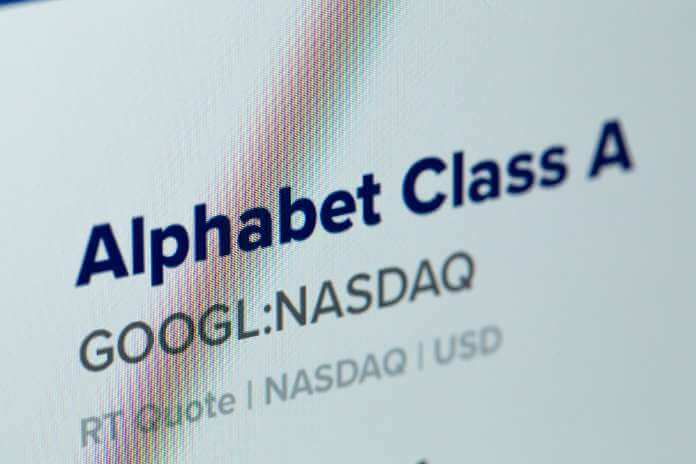Sundar Pichai, CEO of Alphabet (NASDAQ:GOOG, NASDAQ:GOOGL), stated that the internet giant needed to enhance productivity on a broad scale. The internet search giant has long been chastised for investing substantially in the future while appearing to have limited expenditure limitations. My investing thesis on the company remains highly bullish, with any significant increase in productivity a substantial gain for owners.
20% Increase in Productivity
Mr. Pichai stated at the Code Conference that Alphabet has to become 20% more productive. He appeared to allude to probable job cutbacks to reduce layers of administration that had accumulated into a bureaucracy over time. Sometimes there are areas for improvement when three individuals make choices; knowing that and reducing it to two or one increases efficiency by 20%. Following this news, Google is said to have told top executives to limit their travel to “business critical” engagements. Most significant corporations have not ultimately resumed business travel with covid-19 restrictions. According to American Airlines (AAL), large corporations have only returned to 75% of 2019 levels of business travel.
In any event, Alphabet’s announcement does not mention a specific financial goal. For example, being 20% more productive for the company may seem like a lot. Still, the goal is usually to increase earnings by 20%.
There are several methods for measuring productivity. Alphabet now earns roughly $1.8 million in sales per employee. The figure increased in 2021, although growth was slow in previous years. Alphabet is behind Apple (AAPL) by a wide margin in terms of revenue per employee. In contrast, Meta Platforms (META) is marginally higher, and Microsoft (MSFT) is significantly lower, below $1 million.
Because Alphabet looks quite productive in terms of revenue, the other method to boost productivity is to cut expenses while maintaining or increasing existing revenue levels. Both of the new Alphabet tidbits would imply that the firm is seeking to save costs by eliminating unneeded spending. SG&A spending has risen dramatically in the recent decade when measured using GAAP figures. . In 2014, Alphabet spent around $5 billion every quarter on labor expenses; currently, the costs exceed $20 billion.
Despite a 13% increase in revenue to $69.7 billion, Alphabet failed to achieve a higher profit in the second quarter. The software behemoth increased revenues by $7.8 billion yearly while operating income fell marginally due to substantially greater spending. As a result, Alphabet has to concentrate on improving efficiency in the firm. To maintain Q2’21 operating margins of 31%, the corporation needed to generate $2.4 billion in revenue in only one quarter.
Alphabet could create $10 billion in yearly profits just by maintaining margins. The corporation concluded the latest quarter with 174,000 employees, up from 144,000 in the previous quarter. Alphabet could easily prolong the previous recruiting slowdown after increasing its personnel base by 30K over the last year for a 21% increase.
The tech behemoth has grown to the point that 15% yearly revenue growth is considered a very good year. The firm is no longer a startup where expenditure growth should outpace revenue growth. Alphabet should get significant system leverage from modest investment to create additional advertising or cloud income.
EPS Surge
Suppose the CEO can implement a 20% efficiency strategy. In that case, Alphabet may save up to $40 billion annually, with quarterly expenses exceeding $50 billion. Of course, the corporation might increase productivity by combining revenue growth with expense savings. Analysts predict that Alphabet will make more than $5 billion this year, followed by roughly $6 billion in 2023. Of course, these GAAP figures always contain a slew of other expenses, such as stock-based pay, which will be reduced due to local employment of new engineers and maybe the elimination of a management layer.
The $79 billion net income figure for 2023 suddenly becomes significantly more significant than merely multiplying by 20% with 13.2 billion diluted shares. Based on sales predictions of $326 billion in 2023, Alphabet has an expenditure structure of $230 billion, representing a $46 billion cost efficiency gain. It is easy to understand how a 20% increase in productivity has a significant outsized influence on profitability. Based on a 15% effective tax rate, earnings would increase by about $37 billion, delivering a nearly 50% increase in EPS from $2.80 per share to $8.76.
The company is barely trading at 13 times this EPS projection. When SBC is removed, and the Q2’22 net cash balance of $110 billion is included, Alphabet is a much cheaper company. When SBC is removed from the equation, the IT giant earns $1.25 more per share, according to our study. Before accounting for any productivity increases, Alphabet would already be worth more than $7 per share in 2023.
Since Ruth Porat was recruited as CFO in 2015, the corporation has championed the notion of cutting unnecessary expenditures. Investors should invest accordingly, recognizing that a significant increase in productivity is unlikely for a business established on excessive expenditure. However, if CEO Sundar Pichai can increase productivity by 20%, Alphabet’s non-GAAP EPS could reach $10.
Takeaway
The major investor lesson is that Alphabet is inexpensive even without considering productivity gains or non-GAAP figures. If CEO Sundar Pichai can increase productivity by 20%, the stock will be a steal at just 11 times earnings.
Featured Image – Megapixl © Prim91











